On the right, one of the Dirae, the Dread Ones, appearing as a bird, specifically an owl, flies around the head of Turnus, filling him with fear (843-68). Aeneas pursues Turnus with his large spear, and Turnus holds a massive rock which he attempts to throw at Aeneas (895-914). In the upper left, Juturna sees the owl by Turnus's head and knows it is a sign that Turnus will die (869-84). Grieving, she sinks down into her river (885-6). On the left, Aeneas has hit Turnus with his spear and kneels over the Rutulian hero (919-27). Turnus begs for mercy (929-39), which Aeneas almost grants. Then Aeneas sees the belt of Pallas (940-4) which, in this image, Turnus wears around his waist, and he plunges his sword into the chest of Turnus.
Woodcut illustration from the “Strasbourg Vergil,” edited by Sebastian Brant: Publii Virgilii Maronis Opera cum quinque vulgatis commentariis expolitissimisque figuris atque imaginibus nuper per Sebastianum Brant superadditis (Strasbourg: Johannis Grieninger, 1502), fol. 408v, executed by an anonymous engraver under the direction of Brant.
License
Creative Commons Attribution-NonCommercial-ShareAlike


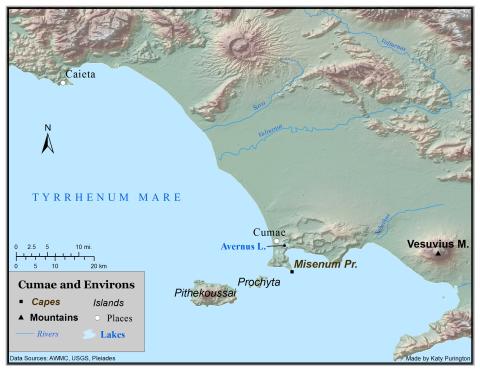


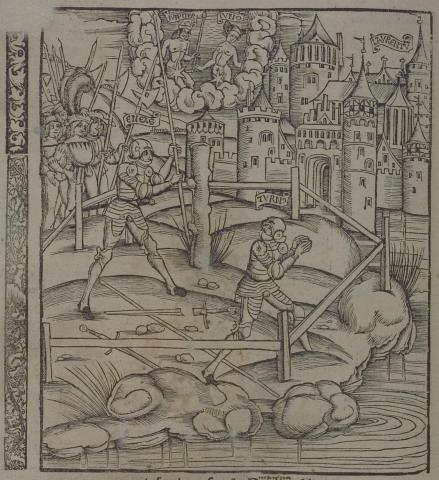
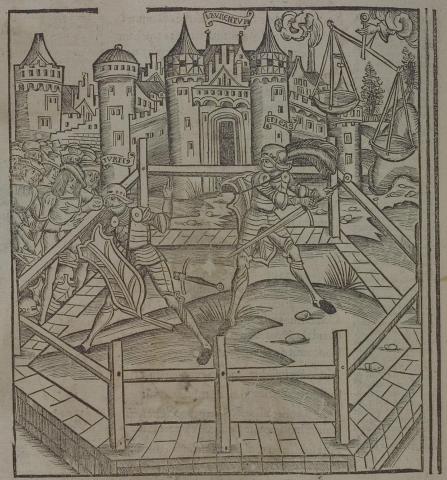
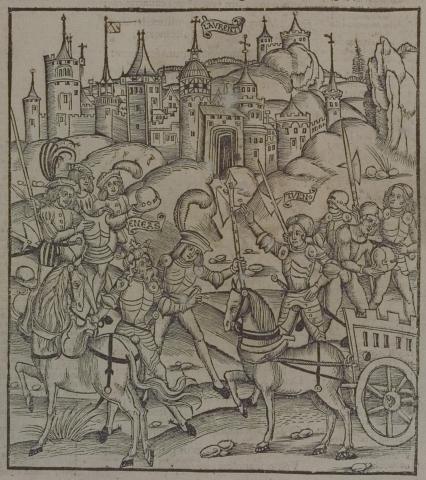
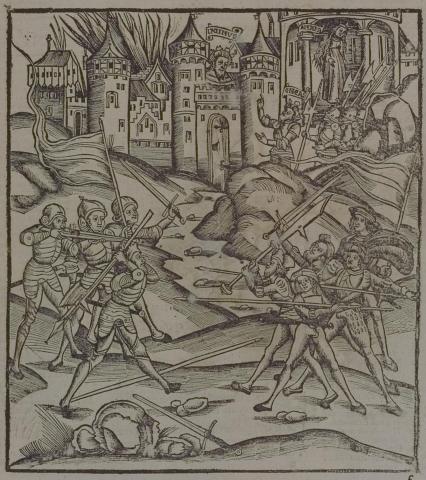

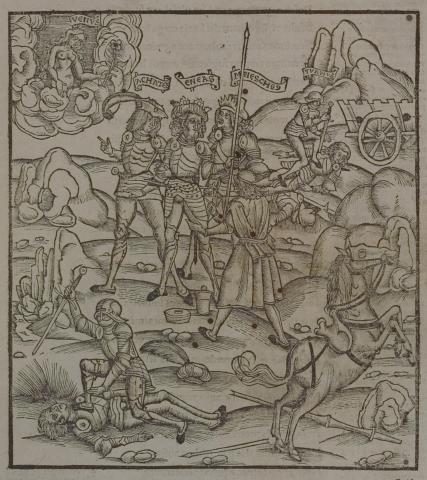
Aeneid 1.338-341
Pūnica rēgna vidēs, Tyriōs et Agēnoris urbem;
sed fīnēs Libycī, genus intractābile bellō.
Imperium Dīdō Tyriā regit urbe profecta,
germānum fugiēns.
Aeneid 1.365-368
Dēvēnēre locōs ubi nunc ingentia cernēs
moenia surgentemque novae Karthāginis arcem,
mercātīque solum, factī dē nōmine Byrsam,
taurīnō quantum possent circumdare tergō.
Aeneid 4.35-44
Estō: aegram nūllī quondam flexēre marītī,
nōn Libyae, nōn ante Tyrō; dēspectus Iärbās
ductōrēsque aliī, quōs Āfrica terra triumphīs
dīves alit: placitōne etiam pugnābis amōrī?
Nec venit in mentem quōrum cōnsēderis arvīs?
Hinc Gaetūlae urbēs, genus īnsuperābile bellō,
et Numidae īnfrēnī cingunt et inhospita Syrtis;
hinc dēserta sitī regiō lātēque furentēs
Barcaeī. Quid bella Tyrō surgentia dīcam
germānīque minās?
Syrtis: Syrtis Minor (modern Gulf of Gabès) or Syrtis Maior (modern Gulf of Benghazi) or both (Brill)